Peak Design straps made it easy to carry cameras outdoors
Article and photos by Gary Cox
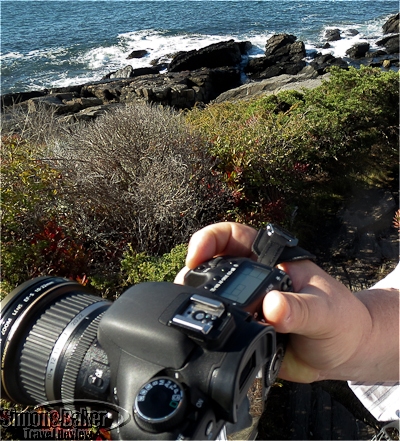
Using the Clutch I held the camera in position, ready to shoot during a cliff side hike
I had a chance recently to field test the Slide and Clutch camera straps from Peak Design. Prior to using the new straps, the Canon EOS-7D SLR I use when traveling sported the manufacturer supplied neck strap and I rarely gave it a second thought. It was a bit annoying when using the tripod to have the strap hanging off the camera, but it was too much trouble to remove or even adjust the old fashioned length clips, except in extreme circumstances.
When walking around to photograph a property or a destination, the strap provided a measure of safety to avoid dropping the camera, but I had to be alert and hold the camera in my hands to prevent the lens or body from smacking against something and being damaged. When hiking, I usually place the camera into a padded pack or case. With the camera securely packed away, I noticed a tendency to only pull it out and use it at particularly special spots, sometimes passing up shots that I would regret later. Holding the camera with the Clutch make it more likely for me to take those spontaneous photos, and for that I was glad.
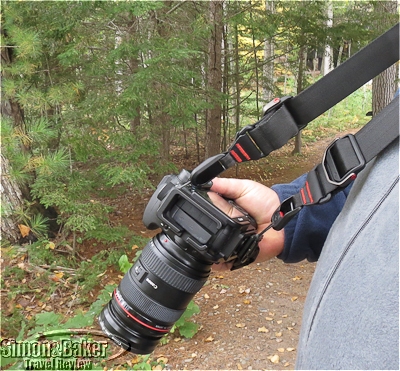
The Slide shifted the weight of the camera away from my hand during long walks
The Peak Design straps offered some noteworthy innovations that made it easier to carry the camera securely and be ready to take a shot at anytime. The Clutch was a surprising pleasure to use. It allowed me to hold the body securely with my hand positioned to shoot. I adjusted my grip using its small strap to fit my hand snugly in place. Adding the Slide strap made it easy to carry the camera along on a hike, ready to shoot at all times, while shifting the weight to my neck. The Slide strap was sturdy, made from the same material as vehicle seat belts, and reinforced with padding in the center. It was simple to adjust the length of the Slide by opening the clips, moving the strap through them and locking it securely.
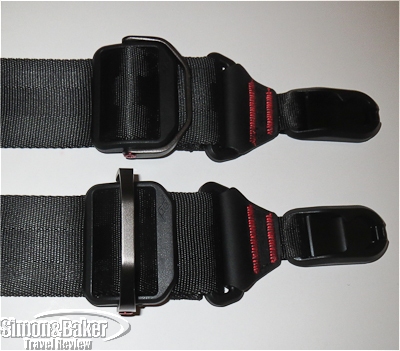
The quick release clips made length adjustments easy
The Anchor Link quick-connectors attached the Slide to the camera body and the bottom of the Clutch. The top of the Clutch attached directly to the camera, with a quick release spring to prevent accidental release. A plate provided with each strap could be mounted onto the bottom of the camera body using a standard screw. Multiple quick-connectors could then be attached to the plate. I prefer to use my custom fit plate from Kirk Photo on the camera body because it allows me to turn the camera sideways on the tripod and provides a stable surface to set the camera onto (provided the attached lens is not too heavy). Fortunately, my Kirk Photo plate includes a nice little slot to mount the quick-connectors. Aesthetically speaking, I prefer the sleek lines of my single plate which is custom shaped to the Canon body and will not twist or turn when I adjust the camera on the ball head.
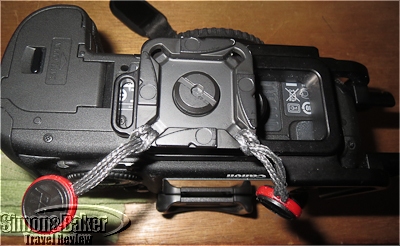
The plate supplied with the straps provided four mount points
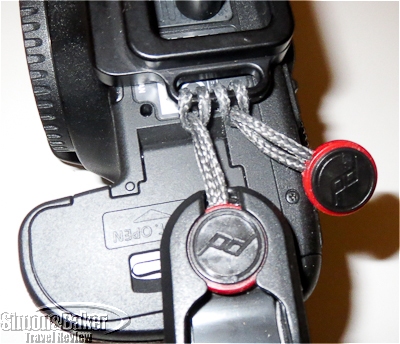
My Kirk Photo custom plate also provided a useful mounting point
The quick-connectors allowed rapid attachment and removal of the straps, perhaps my favorite feature. They gave the set-up solid feedback, and could support 150 pounds each, according to the manufacturer. The interlocking of the lozenge shaped anchor into the clip provided easy visual confirmation that the strap was secure. With a few extra Anchor Link quick-connectors on hand, my spare camera body can be ready for action quickly. All it requires is that I move the straps. I liked being able to remove the strap when placing the camera onto the tripod, eliminating one potential tipping hazard. I never found it necessary to detach the Clutch, other than when I was playing with different configurations of the Sling, a few of which used the top attachment point on the camera body.
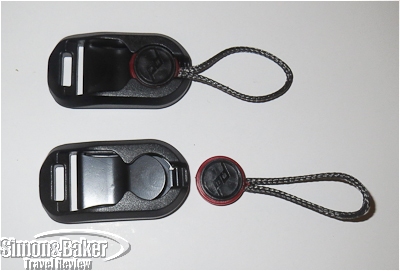
The Anchor Link quick-connectors attached the straps to the camera securely
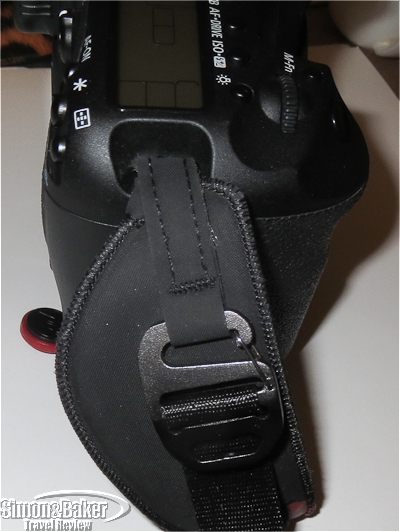
It was a matter of moments to set up the Clutch attachment to the camera
Peak Design took the mundane camera strap and updated every aspect of it. They improved the method of attachment, how it is adjusted, the options for carrying the camera and enhanced my overall experience as a photographer. I plan to continue to use those straps as part of my ongoing equipment configuration. The Peak Design mission of enabling “photographers, adventurers and outdoors enthusiasts to better capture the beautiful world around them” appealed to me. I was pleased to discover the products fulfilled this mission for my purposes. Peak Design, 2325 3rd Street Suite 410, San Francisco, California 94107, http://peakdesignltd.com
+1 312.203.8427, info@peakdesign.com.







